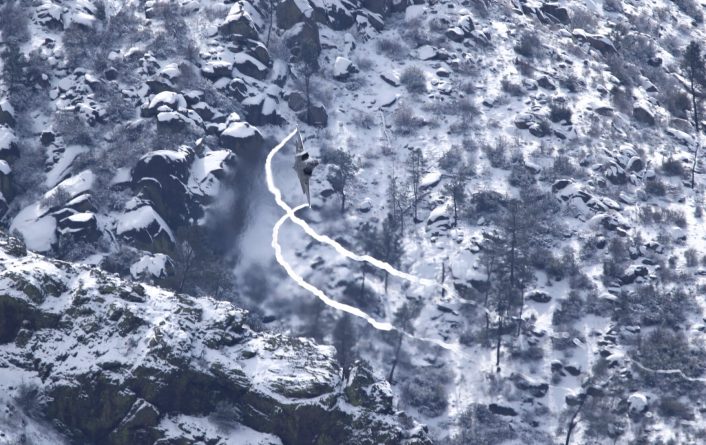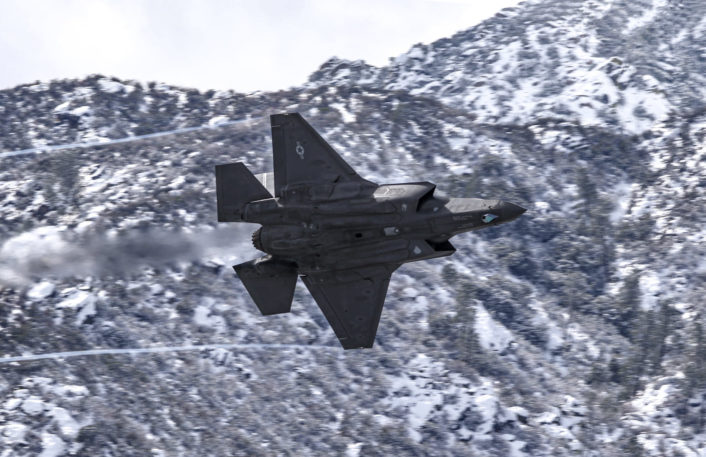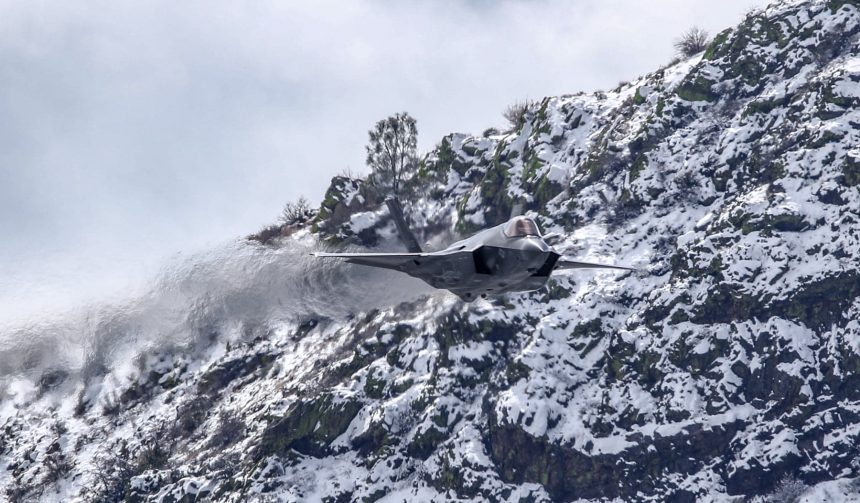This is something you don’t see too often!
The stunning photographs in this post were taken on Feb. 21, by our friend and photographer Christopher McGreevy.
They show a 461th FLTS F-35A from Edwards Air Force Base, at low level, on the Sidewinder low level route, enroute to the famous “Jedi Transition”.
While we are used to see some great photographs of the F-35s, F-16s, and many other types thundering over the desert in the “Star Wars” canyon, the rare snow days in California provided a fantastic background for these shots McGreevy shot from an unusual spot, deep in the Sierra Mountains.

As mentioned several times here at The Aviationist, what makes the low level training so interesting, is the fact that aircraft flying the low level routes are involved in realistic combat training. Indeed, although many current and future scenarios involve stand-off weapons or drops from high altitudes, fighter pilots still practice on an almost daily basis to infiltrate heavily defended targets and to evade from areas protected by sophisticated air defense networks as those employed in Iran, Syria or North Korea. While electronic countermeasures help, the ability to get bombs on target and live to fight another day may also depend on the skills learnt at treetop altitude.
To be able to fly at less than 2,000 feet can be useful during stateside training too, when weather conditions are such to require a low level leg to keep visual contact with the ground and VMC (Visual Meteorological Conditions). Aircraft involved in special operations, reconnaissance, Search And Rescue, troops or humanitarian airdrops in trouble spots around the world may have to fly at low altitudes.
Even a stealth plane (or helicopter), spotted visually by an opponent, could be required to escape at tree top height to survive an engagement by enemy fighter planes or an IR guided missile.

That’s why low level corridors like the Sidewinder and the LFA-7 aka “Mach Loop” in the UK are so frequently used to train fighter jet, airlifter and helicopter pilots.
And such training pays off when needed. As happened, in Libya, in 2011, when RAF C-130s were tasked to rescue oil workers that were trapped in the desert. The airlifter took off from Malta and flew over the Mediteranean, called Tripoli air traffic control, explained who they were and what they were up to, they got no reply from the controllers, therefore continued at low level once over the desert and in hostile airspace.
H/T to our friend Christopher McGreevy for sending us these shots. Make sure to visit his stunning Instagram page here.









